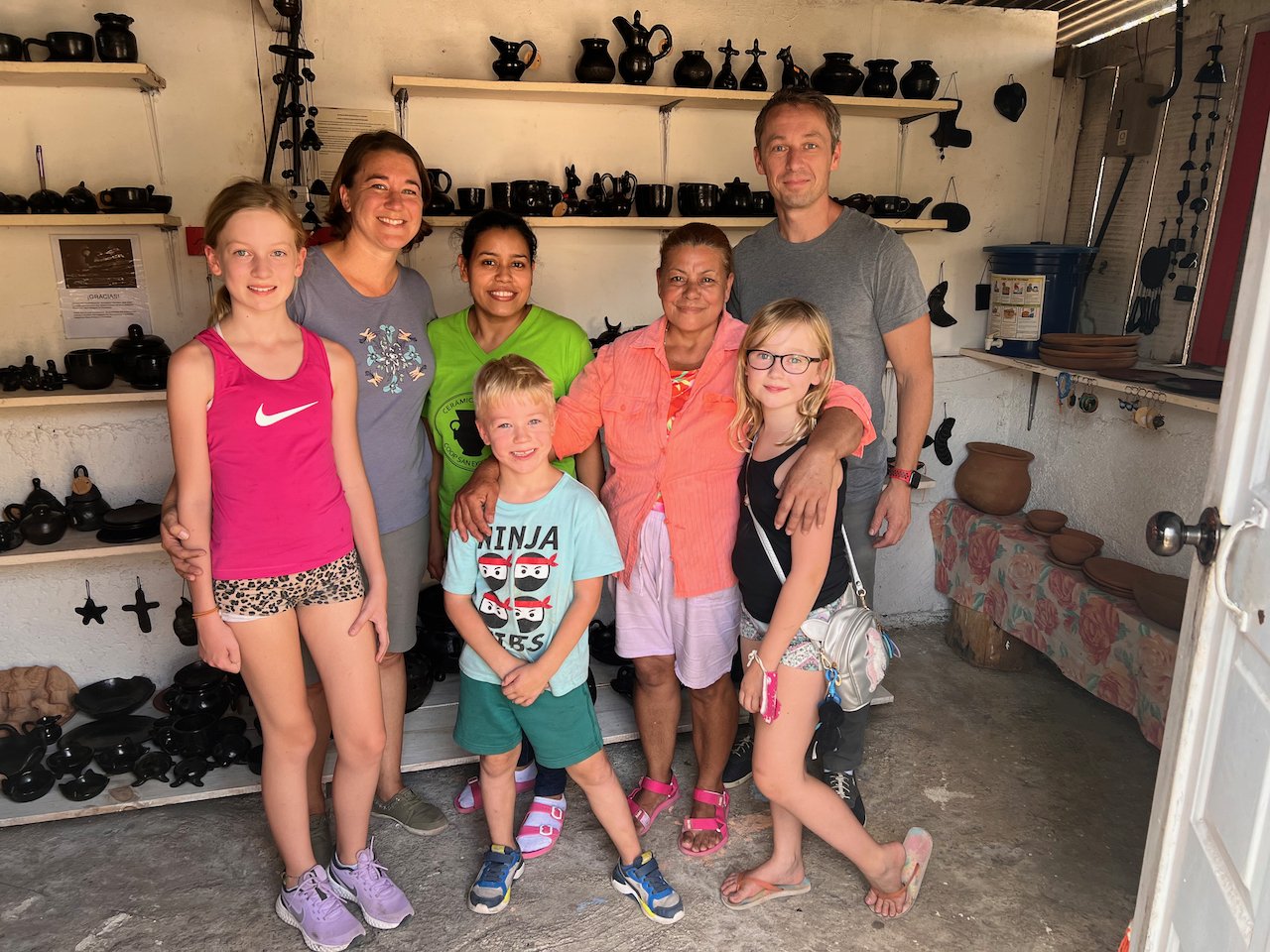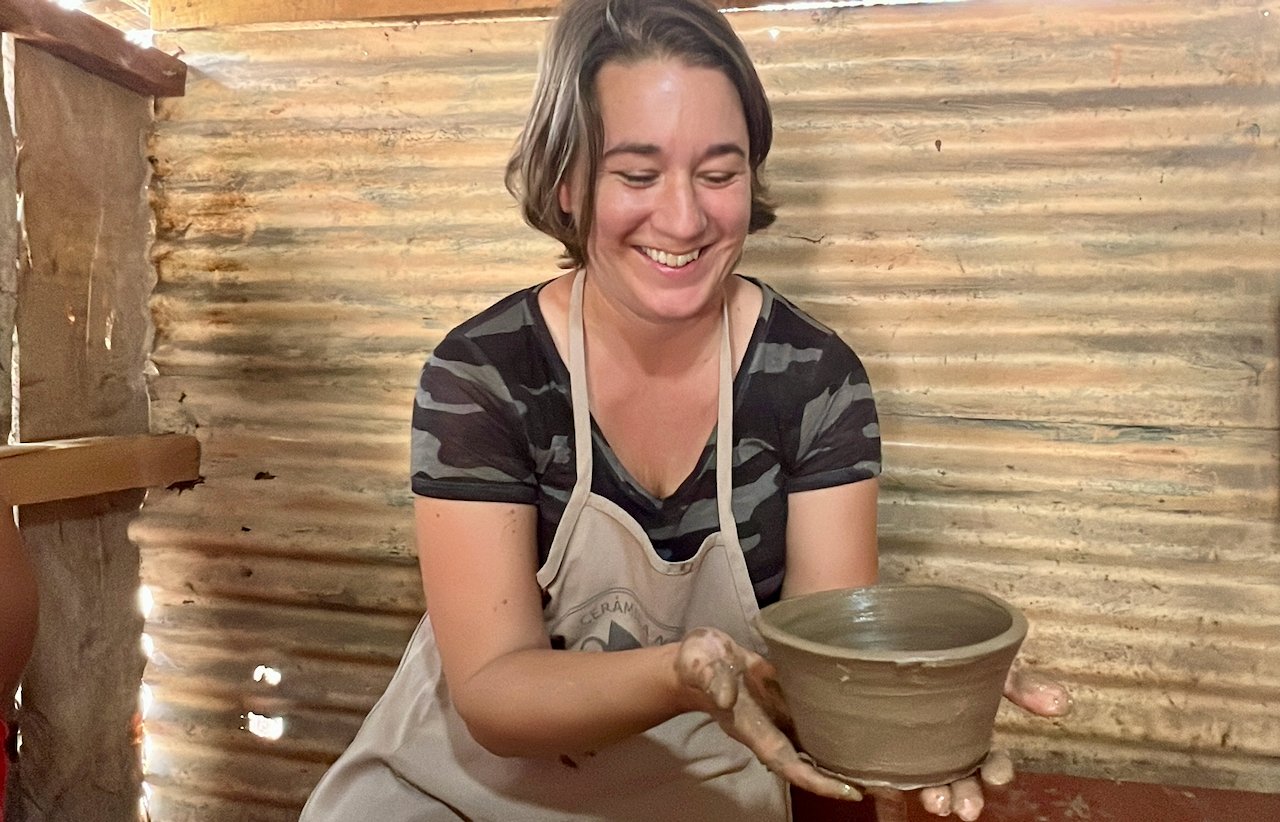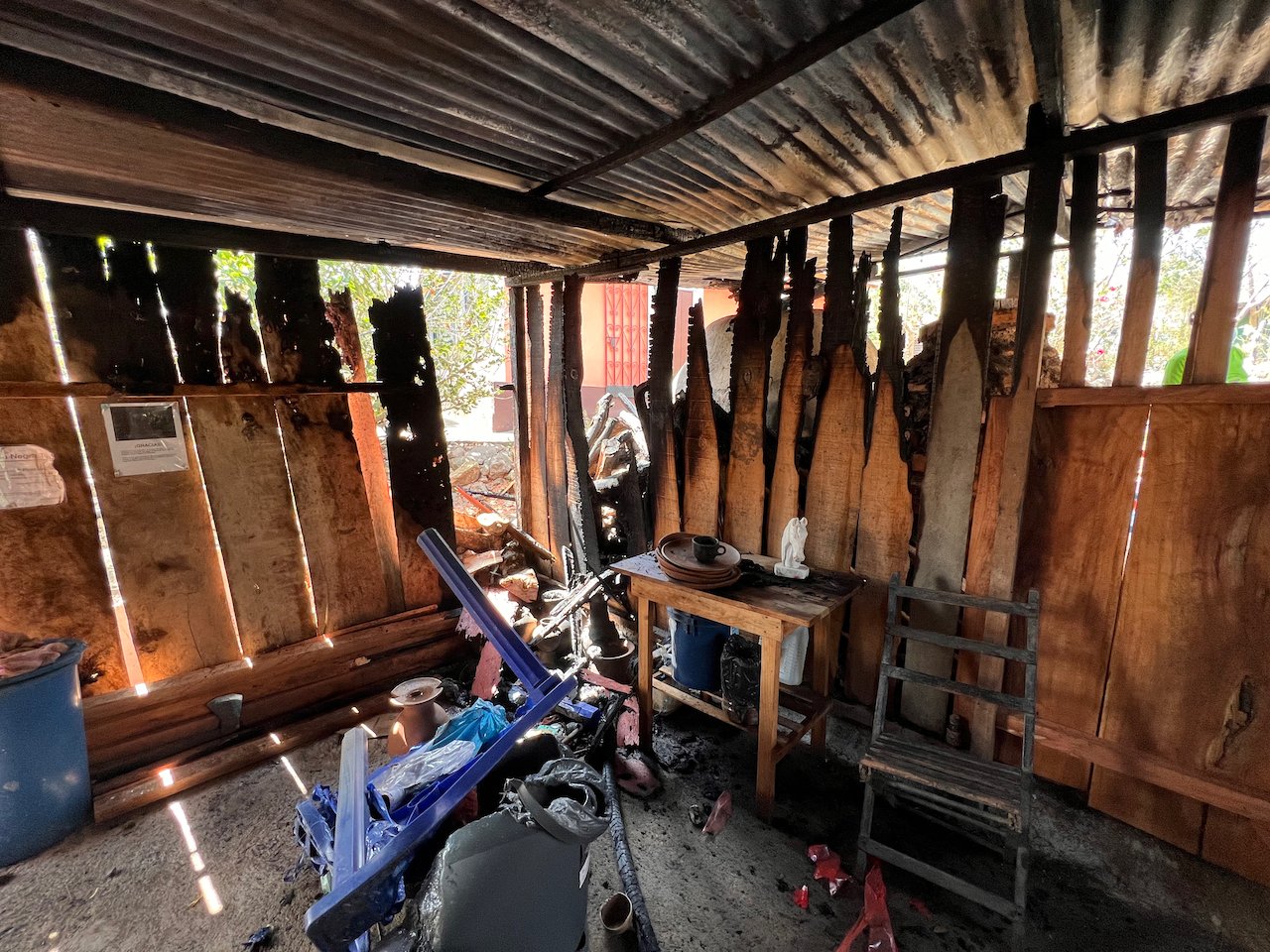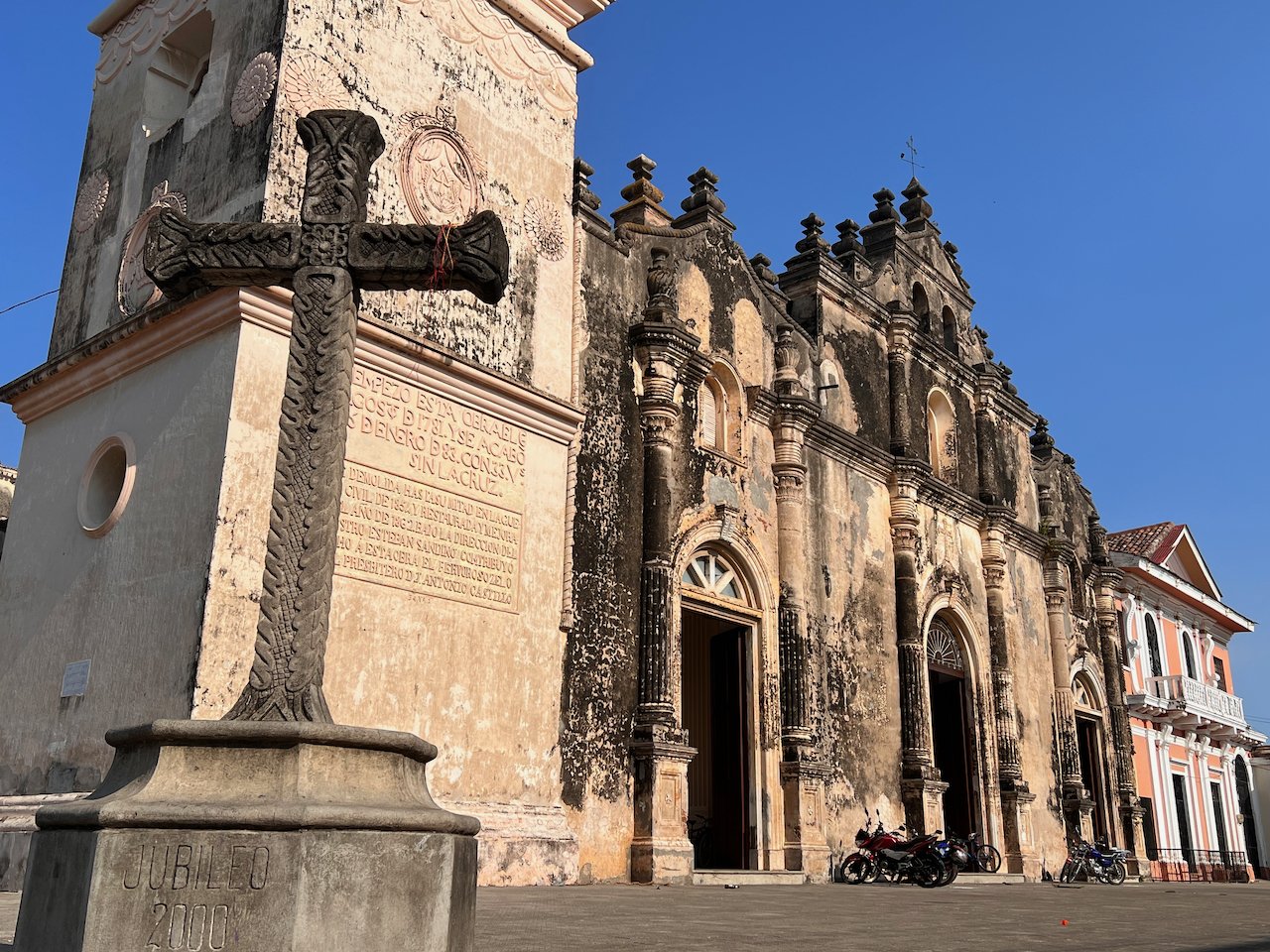This edventure begins in Matagalpa, a town 700m above sea level known for its eternal spring weather. It’s also a hub for agricultural products, principally coffee, cattle and milk products, vegetables, and flowers. It is also located close to an area of the country known best for the ancient craft of black pottery.
We were introduced to a local guide named Marlon by another travelling family who used his guide services on a trip back in 2019. We hadn’t really done any research about Nicaragua so we decided to work with Marlon as well. When he mentioned black pottery, we were all excited to try it out! Since he was an acquaintance with one of the ladies who are part of the women’s collective called Cooperativa San Expedito, he was able to ask if we could have a full 2-day lesson instead of just a tour. The ladies, now only a team of 4 (used to be 11 before COVID hit and tourism dropped), we’re very happy to show us the craft and to let us all build our own pieces. We were among the very few who’d ever asked to spend 2 days and go through the multi-step process with them, and we felt really priviledged.
We expected to see pottery wheels, but we didn’t expect to see manual ones. These tables and balanced in such a way that you can use your foot on a bottom, horizontal wheel, that is connected to the table wheel. You control the rate of spin using your own human power. It was not easy to balance, use your foot to spin the wheel (think of the pawing motion a horse makes on the ground), while resting both hands on the pottery and not letting your upper body move while you kick the wheel. The ladies make it all look flawless. They let us shape the pieces while helping to hold the work in the right position so that it would actually take a symmetrical shape. But I’m getting ahead of myself. There are a number of steps that had to come first (which we didn’t do or else we’d have been there over a week).
Step 1: collect the clay from the neighbouring hills. The clay is about 1m below the surface of the ground. The ladies take spades and shovels a few kms up the hills and dig up the clay. They get help to carry it down to the house.
Step 2: soak and wash the clay. The collected dirt contains lots of small stones, twigs, bugs, and other items that would create lumps or bumps in the clay. They take what they have collected and soak it for a few days while stirring and sifting it every so often. When they think it has been sufficiently cleaned and is the right consistency, they drain it and let it get a bit harder.
Step 3: form the piece. This is where we started. We were given a clump of clay and shown how to create a plate and a small cup. I chose to make a bowl and Molly also opted to make a bowl while Simon made a plate and cup and Erik made two espresso mugs. Claire made a cup and plate but also made a small vase. Once formed, the pieces were left in the sun to dry.
Step 4: add handles and shave off edges. After about 3 hours, we were able to add handles to the cups and we were given some tools to shave the bottoms and round the edges. The pieces were then left overnight to dry completely.
Step 5: polish with rocks. We were handed smooth river rocks and were told to colour every surface with the edges of these rocks using fairly strong force. Once it was completed, the pieces sat in the sunlight again for an hour. We then did it all over again – same rocks colouring on every surface. At this point the clay is a medium brown colour, not black. Rubbing it with rocks made the surface shiny but didn’t change its colour.
Step 6: fire the pieces in the brick kiln. The ladies built a fire and put our pieces inside to bake at 1200 degrees while we headed out to find some lunch. When we returned, they were ready to come out! They carefully took each piece out with long, metal tongs and then placed the piece directly into a pile of burning wood shavings. They then covered it completely and stirred them around a few times. When they emerged, they were completely black!
Step 7: wipe and decorate. That’s it. Just rub the item with a rag to get any soot off, then take a sharp tool and start etching any decorations you’d like.
We were all very proud of our creations and the ladies were very pleased with our skills. They were excellent teachers. But I must also mention that they were exceedingly generous with their time. On our first day, a number of family members were working in the house making many batches of special bread for the Easter Week celebrations. Near the end of our day, the ladies made a fire in the clay oven beside the kiln and were baking these large batches of bread. Some were corn-based, and others were wheat-based. All of them were delicious as they made sure to give us each a piece to taste. When we arrived on our second day, the ladies started their greeting with apologies. They said, “we had a bit of an incident last night but it’s all ok now”. That “bit of an incident” was a large fire that must have sparked from leftover bread oven embers. It ignited their workshop walls, melted some of their chairs, and was close to taking down their whole workspace. Thankfully the family woke in time to get it out and save the pottery equipment. Yikes. Despite little sleep and the adrenaline of the close call, they were still their smiling selves and happily helped us to finish our lessons without any interruption to the plan. It was so humbling to share this time with people who have much less than we do, who have had unfortunate events ensue, and who have already adjusted, shrugged, smiled, and made quick plans to repair. We bade them farewell and wished them all the best.
Marlon also taught us a lot about Nicaragua’s history and politics. We visited a small museum that honoured a national hero, Carlos Fonseca, for his key role in supporting the liberation of the country from a dictatorship government. The liberation party from the 70s is the current governing party, although it appears that it no longer espouses its liberation values and has taken steps toward dictatorship once again. We enjoyed walking around the city and seeing the hustle and bustle of its inhabitants.
From Matagalpa, we made our way to the city of Grenada stopping first to see the Masaya Volcano. This active volcano is one of the few in the world whose crater is accessible by car. The parking lot is literally at the crater’s edge. If you visit during the day, like we did, you will likely only see the hot steam emanating from the chamber of magma. If you visit at dusk or at night time, the crater glows hot orange. The volcano isn’t the only attraction. The park is a wildlife preserve and also hosts some interesting caves that are populated with bats. With our schedule, we only visited the volcano. It was a larger crater than we had anticipated and felt very eery to see the smoky steam and to smell the sulphur. There is also a small museum which does a great job of giving visual information about the line of volcanoes that exist in Nicaragua. It’s definitely worth a visit.
Granada is a colonial town on the shores of Lake Nicaragua that has withstood a number of pirate attacks. The city was an important trade location and both pirates and filibusters would travel from the Caribbean Sea, up the San Juan River, and onto Lake Nicaragua. From the 1600s to the 1800s, the city withstood many attacks. It’s a place with a colourful history, some of which we learned while taking a horse-drawn carriage tour one evening. The buildings are colourful, the roads are cobblestone, and there are a number of interesting stores and restaurants to explore. We stayed in a lovely hostel right near the central park.
Our visit overlapped the Easter weekend so we were fortunate to be able to attend the Good Friday evening processions. A number of churches hosted their own processions carrying Jesus in a coffin. We walked with one and then watched a second. It was heart-warming to see a community brought together in faith.
Lake Nicaragua is huge – it’s the same area as the country of El Salvador. On the shores of the lake close to Grenada is an archipelago consisting of 365 small islands. Local legend states that the Mombacho Volcano created one island every day over the course of a year. We were able to take a boat tour of some of these islands and see lovely homes but also some wildlife such as capuchin and spider monkeys, many aquatic birds, parakeets, and fish. It was a hot day and the long stretch of sandy beach was packed with locals enjoying their holiday weekend. We decided to skip the swimming to avoid the crowds.
From Grenada, we took an hour-long ferry on Lake Nicaragua to the island of Ometepe. This island is the largest on the lake and is home to two volcanoes, one dormant and one active. The island also hosts a number of villages and many ecolodges, hotels, and tourist destinations. It was a decent crossing – a little bit bumpy – and we had another hour-long drive to reach our rental home. We stayed on a small farm in a guest house with lovely fruit trees, vegetables, and animals. It was really hot. We were really hot. Our four days went by slowly as we needed to stay shaded and still in the afternoons. We still got to do and see a few fun things, though!
First, we took a tour of the farm and met all of the horses, goats, cats, and dogs. We met the chickens, roosters, turkeys, ducks, and baby chicks. We were shown the different crops, mostly bananas, plantains, and other fruits like mango and papaya. We were introduced to new food items such as guanabana and jocote (also known as mombin). They also had an avocado tree, some coconut trees, coffee trees, and a few cacao plants. It wasn’t a huge farm, but it sure had a lot to offer.
Apart from one day when we visited the local swimming hole, we hung out, relaxed, did some trip administration, and enjoyed the solitude. Each evening, we’d see a family of spider monkeys in the trees nearby. The horses were fun to watch, especially when they would try to sneak into the garden for a snack. The dogs were great company and stayed on our porch most of the time we were there. Erik found some rocks on the property that had some ancient petroglyphs, something that exists in a number of places on the island. We heard birds and insects singing all day and even met a large cane toad. Our only issue was the heat. The sun rose at 5:30 and was hot from the first minute. The days were measuring in at 34-36 degrees even before the humidity was considered. The evenings would drop only to 28 or 27. It was tough to stay cool but we managed to enjoy our visit even when hot and sweaty.
We said goodbye to the farm and drove to the ferry. From there, we had a few hours until we reached the Costa Rica border. Farewell Nicaragua. We had a lovely time!











































































































